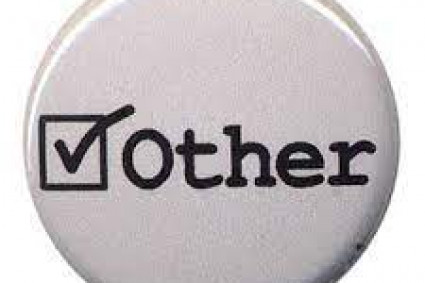
Introduction:
Embroidery, an art form dating back thousands of years, continues to fascinate with its intricate patterns and special craftsmanship. One of the most exciting parts of embroidery is the colorful selection of thread shades that transform a simple fabric into a beautiful fabric. artwork In this blog, we can explore many global embroidery thread shades, give an overview of the right palette for your initiatives,
Suggestions for color combinations and the effect of color in custom embroidery Color in embroidery Color is a powerful tool in any creative work, and embroidery there is no exception. Colors evoke emotions, create mood and can tell stories. In embroidery, the right color palette can bring a pattern to life, add depth and embellish the visual appeal of the finished piece.
Understanding Embroidery Color Theory
Before diving into thread selection, it is important to understand some basic ideas about color concepts. This information will help you make informed decisions about shade choices and mixes.
Main Colors: Red, blue and yellow are the main colors. These colors cannot be created by mixing other colors.
Secondary Colors: Green, orange, and purple are secondary colors that are formed by mixing the number one colors.
Tertiary Colors: These are created by mixing a primary color with a secondary color to produce unusual colors such as purple orange or blue.
Complementary Colors: Colors opposite each other on the color wheel, including purple and green, are complementary. These pairs create a strong and vibrant look.
Analogous Colors: These are shades that are next to each other on the color wheel, including blue, blue and inexperienced. They usually fit well and create a calm and comfortable design.
Tricolor: Three colored circles with slightly surrounding colors, including purple, yellow, and blue. This combination gives exaggeration while maintaining harmony.
Understanding these basic principles will help you choose colors that work well together and achieve the desired effect in your embroidery projects.
Choosing the Right Embroidery Thread Color
Choosing the right thread shades for an embroidery project involves several elements:
Project Theme and Purpose: Consider the theme of your challenge. Are you developing a piece for a festive occasion, a peaceful landscape or an ambitious expressive piece? The reason for the embroidery will guide your color choices.
Fabric Color: The color of the fabric plays a decisive role in the choice of thread. Choose colors that contrast well with the fabric to make your design stand out. For example, delicate threads dye well on dark fabric and vice versa.
Design Complexity: The complexity of your design can affect your color choices. Simple models can additionally use ambitious contrasting colors, while problematic styles can look superior with a scattered palette.
Personal Preference: Your taste and style will ultimately guide your color choices. Choose tones that resonate with you and reflect your vision for the project.
Tips For Creating Amazing Color Combinations
Creating amazing color combinations is both an art and a science. Here are some guidelines to help you create great palettes for your embroidery projects:
Start with a Primary Color: Choose a dominant color that will be the muse of your palette. It can be a color that stands out in your design or a color that matches the overall look.
Use the Color Wheel: Look at the color wheel to find complementary, analogous or tri-color shades that work well with your base color.
Include Neutral Colors: Adding neutral colors like white, black, gray or beige can help balance your palette and keep it from becoming overwhelming.
Consider the Mood: Consider the mood you want to convey with the embroidery. Warm colors such as reds, oranges and yellows create a vibrant and energetic experience, while cool tones such as blues, greens and purples evoke calm and tranquility.
Experimentation: Feel free to experiment with unique tone combinations. Sometimes unexpected pairings can create the most striking effects.
The Effect of Color in Custom Embroidery
Color has a great effect on custom embroidery and now it not only affects the elegant appearance but also affects the emotions of the viewer. Here are some ways that shades can beautify embroidery.
Accentuating Details: Bright, contrasting colors can bring out unique details in your design and draw attention to intricate patterns or important elements.
Create Depth and Dimension: By alternating sunglasses and the same color, you can create depth and dimension in the embroidery, making the arrangement more three-dimensional.
Set the Mood: As mentioned before, colors can set the mood of your piece. Whether you want to bring joy, peace or excitement, your tonal choices have an important function.
Personalization: Custom embroidery allows for personalization and color is key to creating a unique piece. Using colors with a personal meaning or observing the character of the recipient can make the embroidery more meaningful.
Getting to Know Popular Embroidery Thread Colors
While the color options in embroidery are endless, there are a few shades that are mostly famous among embroiderers. Let’s explore some of these favorites:
Classic Red: Red is a powerful and colorful hue that often symbolizes love, passion and power. It is a popular favorite for floral designs, holiday projects and announcements.
Calm Blue: Blue is a calming color associated with peace and tranquility. It is often used in nature-themed designs that include landscapes and seascapes.
Lush Green: Green symbolizes growth, harmony and freshness. It is a crossover color for leaves, botanical designs and anything to do with nature.
Yellow: Yellow is a happy and uplifting color that symbolizes happiness and warmth. It’s perfect for adding sunlight to any design.
Elegant Purple: Purple is regularly associated with luxury, royalty and creativity. It is a great choice for intricate patterns and designs that require a bit of sophistication.
Timeless Black and White: Black and white yarns are essential in any knitter’s palette. They provide assessment and insight and can be used to create custom timeless designs.
Experimenting with Unusual Colors
While traditional colors have their place, experimenting with unusual colors can add a unique twist to embroidery. Metallic threads, neon colors and multi-colored threads (which change tone along the length) can create beautiful effects and make your designs stand out.





